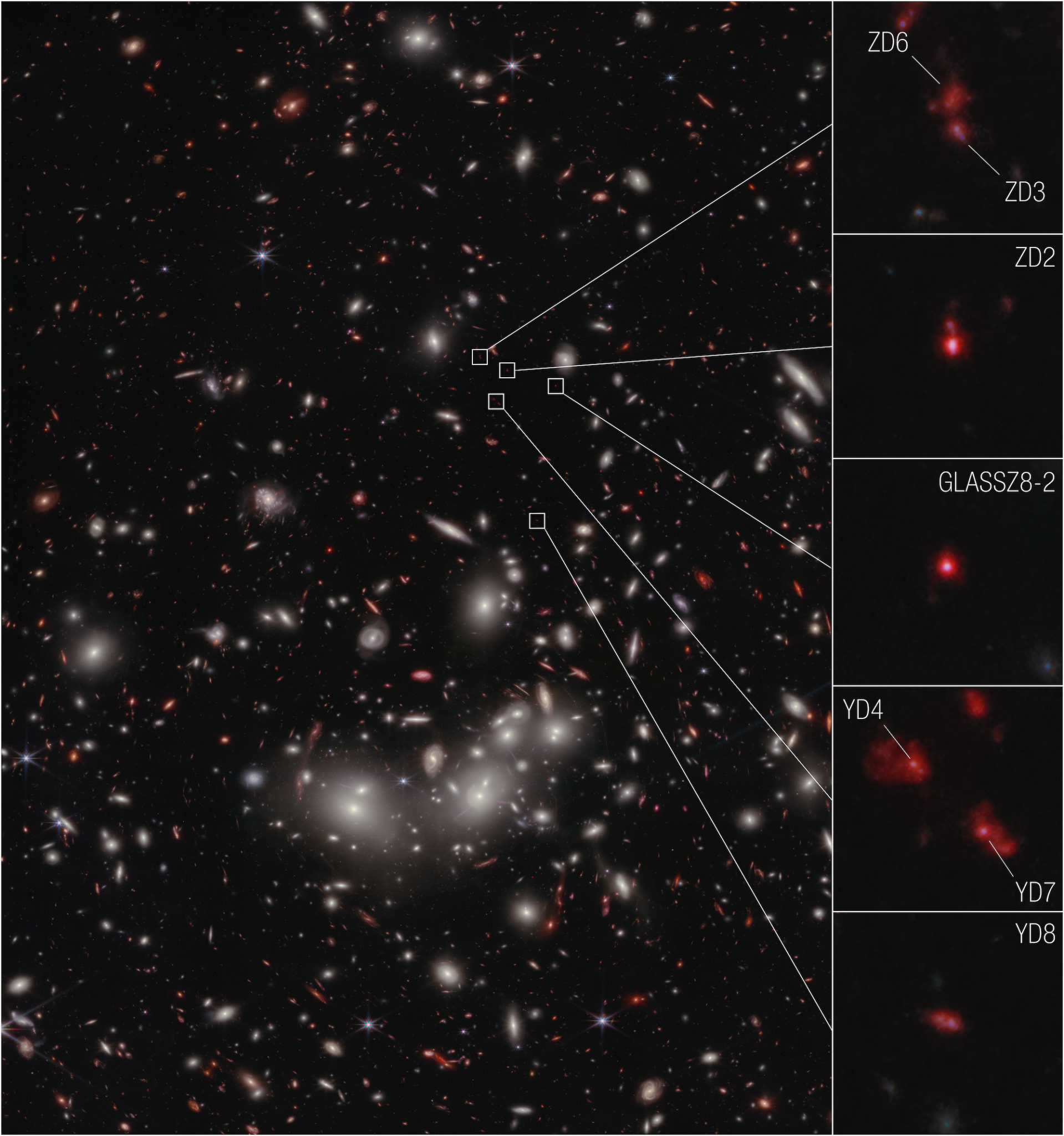The new photo sent by James Webb shows seven ancient galaxies with a high redshift of 7.9, which corresponds to 650 million light years after the Big Bang. This makes them the oldest galaxies spectroscopically confirmed as part of a young galaxy cluster.

Galaxy clusters are the largest concentrations of mass in the known Universe, which can greatly deform the fabric of space-time. This distortion, which is called gravitational lensing, can have a magnifying effect on objects outside the cluster, allowing astronomers to look through them at objects behind, as through a giant magnifying glass.
Dr. Takahiro Morishita, an astronomer at the California Institute of Technology, and his colleagues were able to use this effect by scanning the Pandora cluster (Abell 2744) to see a protocluster in the early Universe.
“The precise measurements made by the NIRSpec near-infrared spectrograph on board James Webb were key to confirming the total distance between galaxies and the high speeds at which they moved in the halo of dark matter — more than 1000 km/s,” commented Takahiro Morishita.
The assumption that the protocluster called A2744-z7p9OD will later resemble the Coma Berenices cluster (Coma) means that this region may become one of the densest known galaxies with thousands of similar objects. Studying how large clusters such as Pandora and Coma first came together had been difficult due to the expansion of the Universe, stretching light beyond the visible wavelength into the infrared spectrum, where astronomers lacked high-resolution data before the launch of James Webb. JWST infrared instruments were designed specifically to fill in these gaps at the beginning of the history of the Universe.
The discovery is reported in an article in the Astrophysical Journal Letters.
Follow us on Twitter to get the most interesting space news in time
https://twitter.com/ust_magazine

